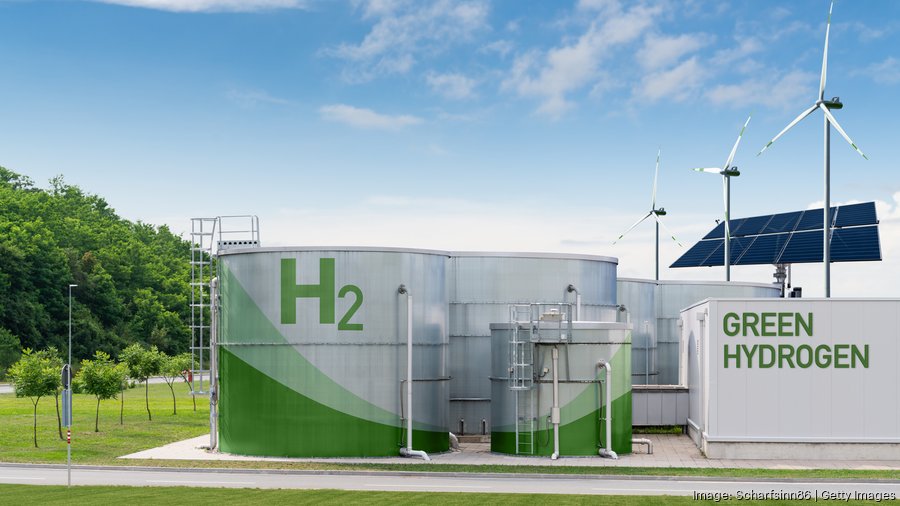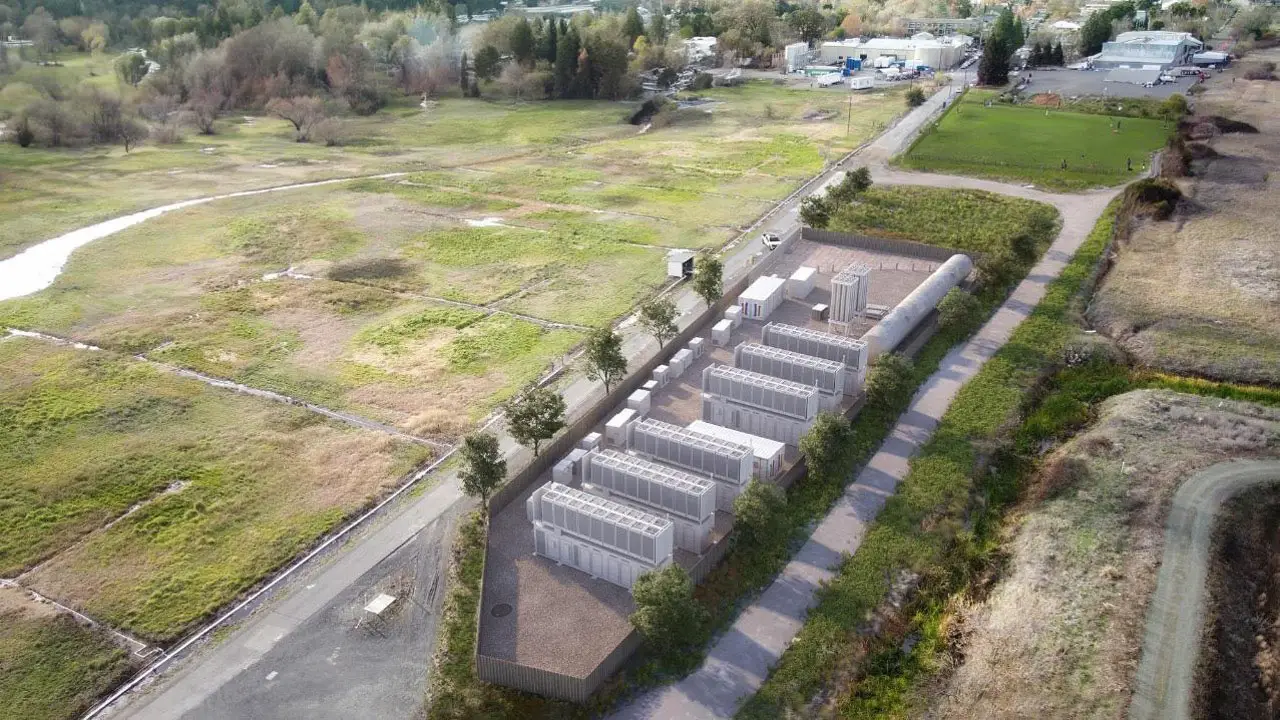Construction of the largest green hydrogen long duration energy storage (LDES) system in the United States has begun. Energy Vault Holdings is leading construction on the 293 MWh system of dispatchable carbon-free energy. The utility-scale green hydrogen plus battery ultra-long duration energy storage system (BH-ESS) with is being developed for Pacific Gas and Electric Company (PG&E). It is located on less than one acre of land in the Northern California City of Calistoga. Once completed, the Calistoga Resiliency Center, will be the first-of-its-kind and the largest utility-scale green hydrogen energy storage project in the country. The battery portion of the system will be used to support grid forming and black start capabilities.
Completion on construction of the largest green hydrogen LDES system
With a completion date of Q2 this year, the system will be prepared to power downtown Calistoga and the surrounding area for up to 48 hours during potential Public Safety Power Shutoffs (PSPS). These PSPS’s occur when the powerlines serving the surrounding area must be turned off for safety due to high wildfire risk. PG&E’s proposal for the system was approved by the California Public Utilities Commission (CPUP) in April 2023. Furthermore, the system will replace the traditional mobile diesel generators currently used to energize PG&E’s Calistoga microgrid during PSPS events in the area. The project represents a major advance in community-scale microgrid development. It also represents a significant step toward realizing the CPUC’s vision of cleaner forms of microgrid generation.
Ownership of the system
The energy storage system will be owned, operated, and maintained by Energy Vault. The company will provide dispatchable power under the 10-year long-term tolling agreement with PG&E. The company’s VaultOS™ Energy Management System will be utilized to control, manage and optimize the BH-ESS operations. Under the 10.5-year agreement, Energy Vault will provide “Distributed Generation-Enabled Microgrid Services”. This is a type of energy service that involves using grid-forming generation and storage resources, to provide energy. Additionally, fault current contribution and to regulate voltage and frequency within the utility’s established parameters. This will enable the islanding of the Calistoga microgrid during PSPS outages.
“The timely start of construction is an important milestone in our partnership with PG&E to deliver this first of its kind microgrid solution. We greatly look forward to not only its delivery but most importantly to the sustainability benefits it will bring to the Calistoga community. Our partnership with California’s largest public utility is yet another example of the growing recognition that optimizing grid resiliency and economics toward achieving decarbonization goals requires innovation that leverages multiple technologies and a ‘fit-for-purpose’ customer-centric approach when designing energy storage solutions. The City of Calistoga and PG&E have been excellent partners for Energy Vault. We are excited to bring this innovative project online in the coming months,” said Marco Terruzzin, Chief Commercial and Product Officer, Energy Vault.
The Duke Energy DeBary green hydrogen project
Last year, Duke Energy also broke ground on a similar hydrogen energy system in DeBary, Florida. The system is set to be completed and operational this year. The 74.5 MW DeBary solar plant will provide ean energy for two 1-MW electrolyzer units. The new system, is a collaboration between Duke Energy, Sargent and Lundy, and GE Vernova. It will create clean energy using an end-to-end system to produce, store and combust 100% green hydrogen, in Florida.

Also Read:
Agreement Inked for the Pudimadaka Green Hydrogen Hub
The European Commission Approves $7.43Bn Budget to Develop the IPCEI Hy2Infra Hydrogen Project
Daimler Truck to purchase liquid hydrogen from Abu Dhabi
UAE’s Masdar and Iberdrola Announce $16B Offshore Wind and Green Hydrogen Investment Plan

